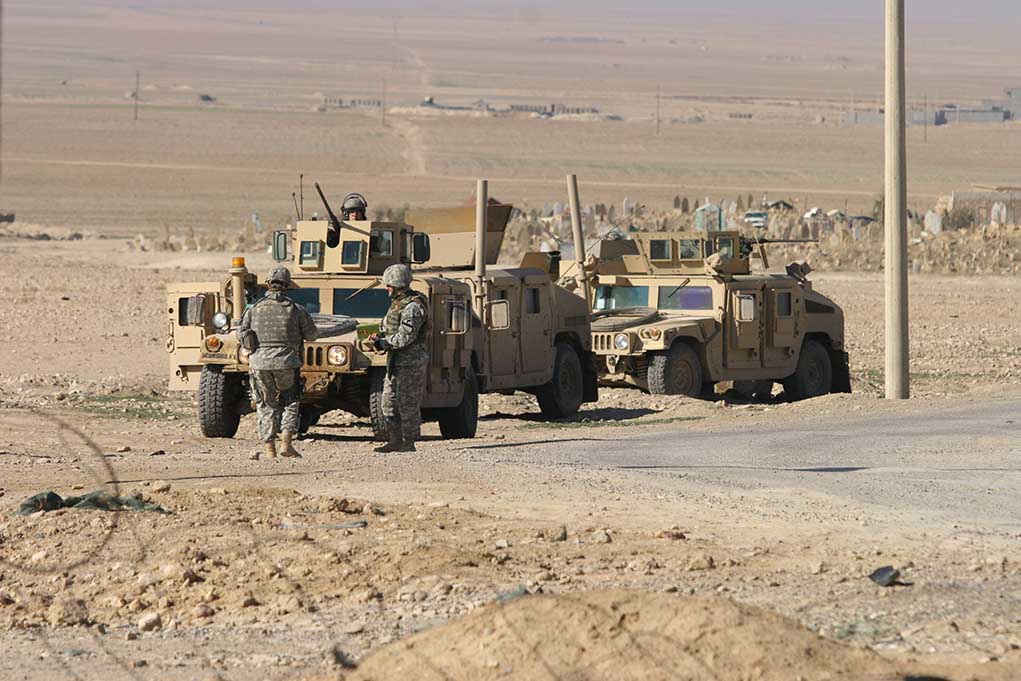
U.S. Army deploys cutting-edge Sgt. STOUT and Avenger air defense systems to Arctic and Africa, showcasing America’s military dominance in challenging environments while strengthening NATO alliances against growing global threats.
Key Takeaways
- Sgt. STOUT conducted its first live-fire mission during Arctic exercises with NATO allies, demonstrating advanced capabilities against aerial threats
- The Avenger System made its historic first deployment to Africa during the multinational African Lion 2025 exercise involving nearly 10,000 troops
- Both systems are designed to counter modern threats including drones, cruise missiles, and low-altitude aircraft—capabilities increasingly crucial in today’s warfare
- These deployments represent a strategic U.S. counter to Russian and Chinese influence in Africa and strengthen America’s defensive posture with NATO allies
- Exercises emphasized networked radar systems and integrated defenses, allowing for earlier threat detection and coordinated responses
Arctic Deployment Showcases Sgt. STOUT’s Capabilities
The U.S. Army’s newest air defense platform, Sgt. STOUT (formerly known as M-SHORAD), successfully conducted its first live-fire mission in the Arctic Circle during NATO’s Formidable Shield 2025 exercise near Andoya, Norway. Soldiers from the 5th Battalion, 4th Air Defense Artillery Regiment operated the Stryker-based vehicle equipped with Stinger missiles, radar systems, and a formidable 30mm cannon. The system demonstrated its effectiveness by engaging target drones that simulated the low-altitude threats increasingly common in modern combat theaters, particularly those highlighted by the ongoing conflicts in Ukraine.
The Arctic exercise involved substantial NATO firepower, including 16 warships, 27 aircraft, and eight ground units from 11 NATO and partner nations. This massive show of allied strength comes as President Trump continues to strengthen America’s military readiness and cooperation with NATO allies. The exercise represented a significant evolution in NATO defense strategy, as it has expanded to include ground-based air defense assets based on critical lessons from recent conflicts. Norwegian SHORAD crews joined American forces to provide the final protective layer during the complex multinational exercise.
U.S. Army Tests New Air Defense in Arctic, Deploys Avengers in Africa
The U.S. Army’s Sgt. STOUT air defense vehicle, formerly M-SHORAD, conducted its first Arctic live-fire drill during NATO’s Exercise Formidable Shield 2025 in Andoya, Norway.
Equipped with Stinger missiles,… pic.twitter.com/vM7sOxbNu2
— Clash Report (@clashreport) May 21, 2025
Enhanced Battlefield Awareness Through Networked Systems
The Formidable Shield exercise highlighted the critical importance of networked radar systems in today’s battlefield environment. These integrated systems allow for early threat detection and information sharing across platforms and national forces, creating a significant tactical advantage. The ability to detect threats earlier and coordinate responses more effectively represents a substantial leap forward in defensive capabilities, especially against the advanced aerial threats facing U.S. forces and allies in potential conflict zones.
“Our radar here can only see so far, but we push what we see to the network, and the ships that maybe can’t see over here get early warning. Likewise, they can see a track further out than we can, so we have a heads-up that something’s coming a lot earlier and that just gives us the edge,” said Maj. Ben Bowman
Norwegian forces employed their National Advanced Surface-to-Air Missile System alongside the Norwegian Mobile Air Defense System during the exercise, while U.S. Marines participated with shoulder-launched Stinger missiles and a tactical air operations center. This multilayered defense approach demonstrated the comprehensive strategy required to effectively counter diverse aerial threats. The integration of these systems allowed for a coordinated defense that could track and engage threats from various altitudes and distances, significantly enhancing battlefield awareness and defensive capabilities.
The Army’s newest air defense platform recently conducted its first live fire in the Arctic alongside NATO allies while another air defense unit deployed the Avenger Air Defense System in Africa for the first time.
The Sgt. STOUT vehicle, formerly known as Maneuver Short-Range… pic.twitter.com/Nenrg9II1u
— Melissa Hallman (@dotconnectinga) May 21, 2025
Avenger System Makes Historic African Deployment
Concurrent with the Arctic exercises, the U.S. Army deployed its Avenger air defense system to Africa for the first time during the African Lion 2025 exercise in Tunisia. This historic deployment involved more than 40 nations, including seven NATO allies, with nearly 10,000 troops participating across Ghana, Morocco, Senegal, and Tunisia. The exercise aimed to enhance allied interoperability against regional and transcontinental threats, while countering growing Russian and Chinese influence in the strategically important African continent.
“By integrating our systems with those of our allies, we ensure that any potential adversary faces a unified, technologically advanced defense. This makes it far more difficult for hostile forces to threaten the United States or our partners,” said Col. Haileyesus Bairu
The Avenger system, mounted on an HMMWV vehicle and equipped with FIM-92 Stinger missiles, provides crucial protection against a variety of threats including cruise missiles, drones, light aircraft, and helicopters. The system features advanced optical sensors, an infrared camera, and an identification friend-or-foe system, all linked to the FAAD C3I network. This comprehensive suite of capabilities makes the Avenger particularly well-suited to address the emerging security challenges in Africa, including the proliferation of armed drones and other low-altitude aerial threats increasingly employed by terrorist organizations.
Strategic Implications for U.S. Global Defense Posture
These simultaneous deployments in vastly different environments demonstrate the versatility and global reach of U.S. military capabilities under President Trump’s leadership. The Arctic deployment strengthens NATO’s northern flank against potential Russian aggression, while the African deployment counters growing Chinese and Russian influence on the continent. Both exercises highlight America’s commitment to protecting its interests and allies worldwide through advanced technology and military cooperation, maintaining U.S. military dominance in an increasingly competitive global environment.
“We leave this exercise more prepared, more confident, and more capable than when we arrived. That’s the true measure of success for us, and it’s what keeps our homeland safe,” said Command Sgt. Maj Charles Robinson
The U.S. Army Southern European Task Force, Africa, led the African Lion exercise for U.S. Africa Command, demonstrating America’s commitment to regional security and partnership. Both deployments emphasized integrated systems and allied cooperation, creating a unified defense capability that would be significantly more challenging for potential adversaries to overcome. These exercises provide valuable training experiences for U.S. forces while demonstrating American commitment to its allies, enhancing collective security and preparedness against evolving threats from various adversaries across multiple domains.












